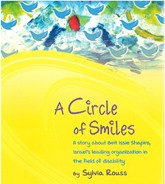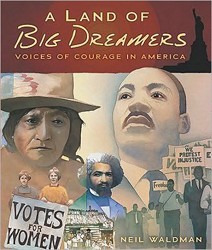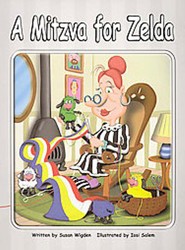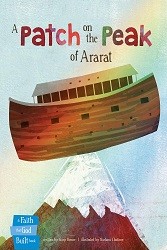One of the cruelties inflicted on the Jewish people during the Holocaust was the destruction of traditional and momentous stepping stones that had formed the core of their existence for centuries. The Bar Mitzvah Boys tells the story, one which was not unique, of an elderly man who had never been publicly called to the Torah for the first time as a thirteen-year-old boy because he was imprisoned in a Nazi concentration camp. Myron Uhlberg describes the bond between the man and his grandson, who share the same birthday, as a natural link between a tragic past and a hopeful present, as they each become a bar mitzvah at the same time. The book’s theme will undoubtedly appeal to caregivers and educators as it emphasizes the chain of tradition connecting generations, a topic of great relevance, even urgency. Children will relate to the love and support between old and young. Both grandfather and grandson are tested by the demands of learning to read Torah, even if the old man is physically tired while the young boy is sometimes bored. Some sentences clearly address young readers at their own level of understanding: “It made him feel like a link in a chain, a long chain that had been broken,” while others seem to address adults: “And together, they were increasingly absorbed in the ageless ritual of the Jewish people.” There is lovely poetic language, although there are also phrases that rely on cliché. Overall, the book succeeds by approaching a profound experience with quiet simplicity.
Carolyn Arcabascio’s illustrations are impressionistic, with minimally defined characters and shadowy settings. Some pictures reflect the present, even as the words on the page return to the past. When the grandfather recalls starvation in the camps by remembering that “some days, he ate snow,” the page’s picture depicts a calm and snowy scene in the present. Uhlberg relates the horrific process in which the Nazis chose who would live and who would immediately die by dividing Jews into groups to the right or left ending with, “The man, who was then a boy, never saw his father again.” Arcabascio interprets this memory not with a scene of the death camp, but of the present-day boy and his own father standing apart, each on a facing page. Their separation is only a temporary and natural one; only the blue-grey background alludes to the tragedy of the previous generation. The synagogue scenes employ an almost ethereal light; the final scene of grandfather and grandson under a bright sky signals a joyful redemption of the past.
The Bar Mitzvah Boys is recommended for young readers as well as adults interested in a Holocaust-themed book with a multigenerational focus.
Emily Schneider writes about literature, feminism, and culture for Tablet, The Forward, The Horn Book, and other publications, and writes about children’s books on her blog. She has a Ph.D. in Romance Languages and Literatures.





